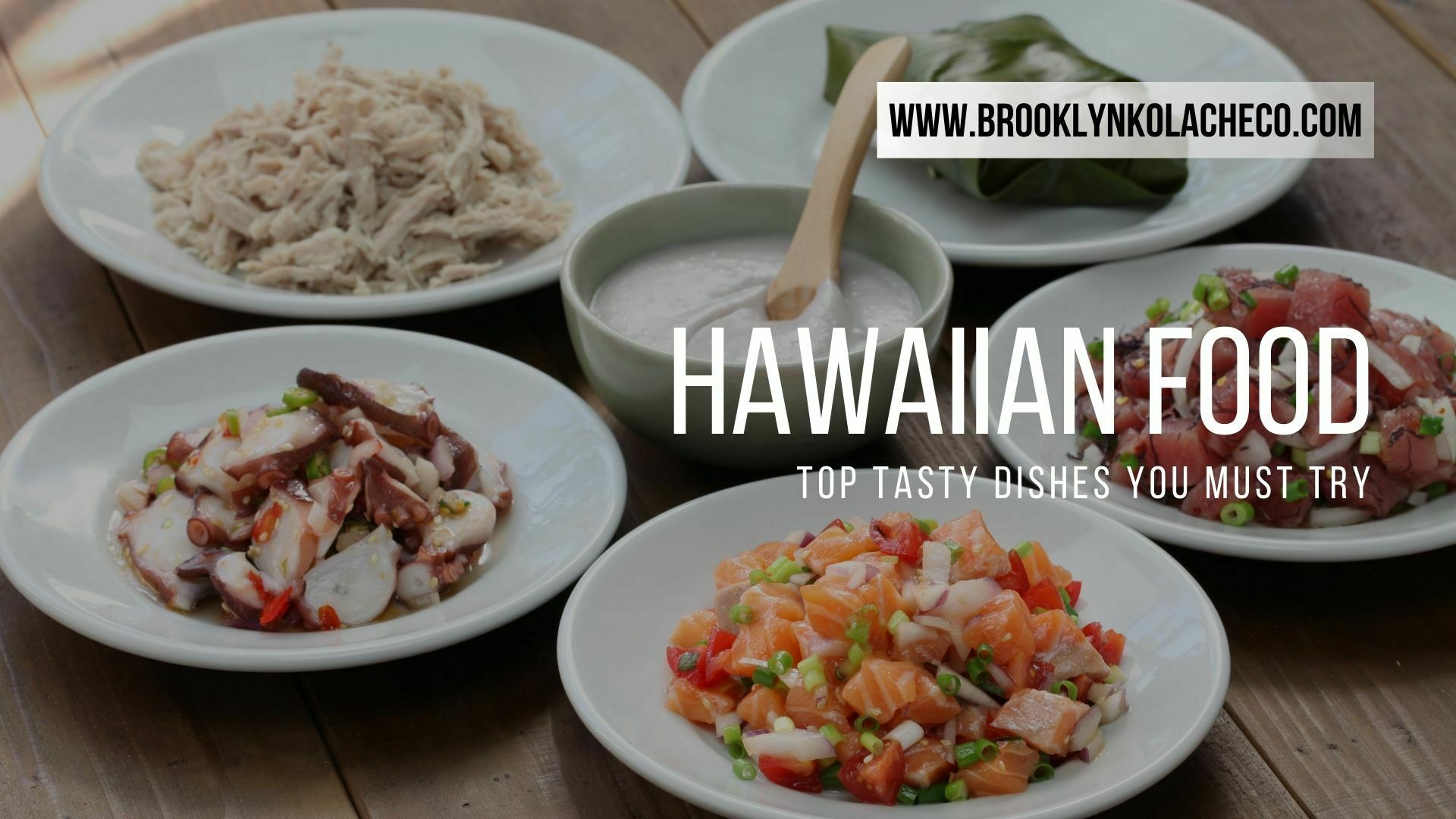Hawaii is known for its unique culinary culture, which includes a wide variety of seafood and produces. The food in Hawaii may seem exotic to some people, but it’s delicious. Let’s explore the top five Hawaiian food dishes to try!
To get an idea about what you’ll find on the menu while visiting the islands, we’ve compiled a list of some popular Hawaiian dishes that you should try and the perfect recipes to make your Hawaiian food at home. Let’s get started!
5 Must-Try Hawaiian Food
Hawaiian food has a unique flavor to it, not found anywhere else in the world. Although there is no such thing as “authentic Hawaiian food.” Some dishes that are popular in Hawaii include Laulau (Pork and butterfish wrapped in a Hawaiian ti leaf and steamed), Kalua Pig (pork traditionally baked underground), and Huli Huli Chicken (a grilled chicken dish).
Kalua Pig
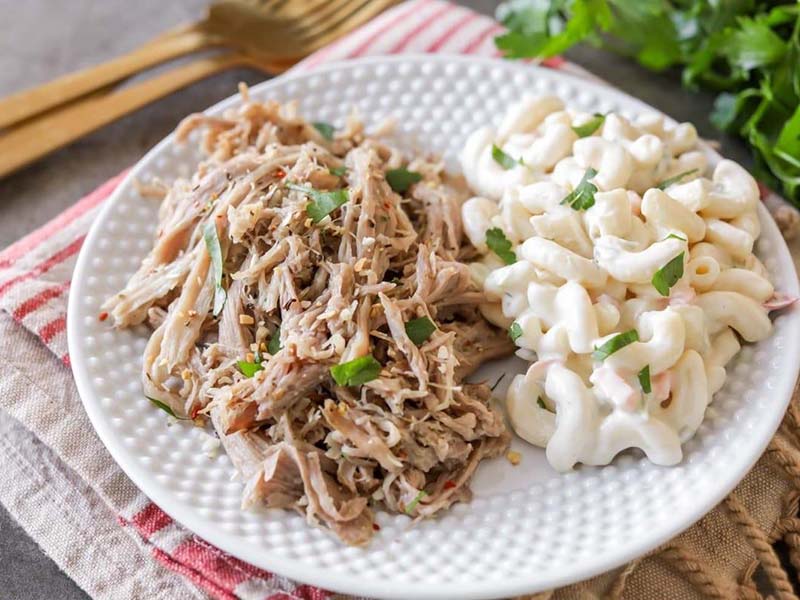
Kalua Pig is probably the most popular dish in Hawaii. It is cooked in an Imu, a traditional oven made by digging a pit in the ground. The whole pig is covered with banana leaves and roasted over hot rocks.
Over the years, Kalua Pig has become a traditional dish for parties and gatherings in Hawaii. The conventional way to eat it is to put a bit of Hawaiian sea salt and Li hing mui powder (a local preserved fruit in Hawaii) into the pork meat before eating it.
Poi
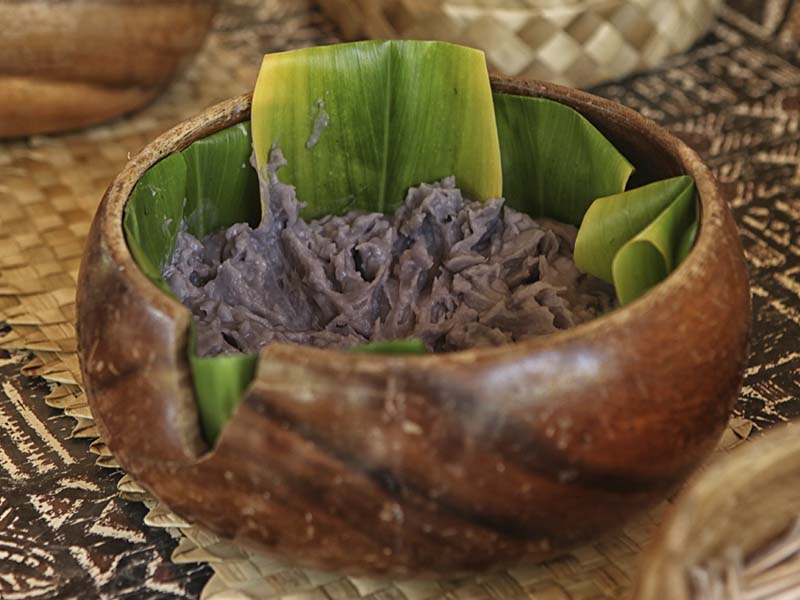
Another popular dish from Hawaii is Poi. It’s a Polynesian starch made from fresh taro corms that have been baked, pounded, and mashed. There are two varieties of poi: “sweet” and “sour.” Sweet poi is translucent in appearance, while sour poi is opaque. To add flavor to the staple, Hawaiians use a condiment called Alaea salt, made from volcanic red clay mixed with Hawaiian sea salt.
Sweet Potato
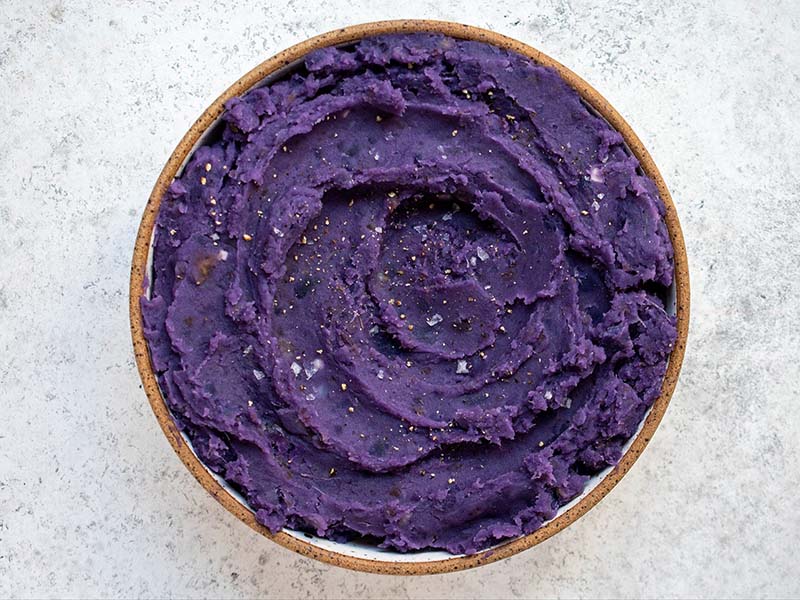
Sweet potato is another popular food in Hawaii. It is said that when Captain Cook arrived in Hawaii, he brought the sweet potato to Hawaii, and it became a well-loved crop by Hawaiians.
Nowadays, you can find two kinds of sweet potatoes: (I) one kind with dry and wrinkling skin and (II) another kind with moist and smoother skin. The dry and wrinkling kind is more common in Hawaii.
The dry and wrinkling skinned sweet potatoes are usually baked on a grill, and the moist and smoother skinned sweet potatoes are usually boiled until tender and eaten with butter.
A majority of Hawaiians love to eat Hawaiian food, including Poi, Kalua Pig, Sweet Potato, Taro, and fresh produce, such as leafy green vegetables, sweet Maui onions, and juicy pineapples.
Loco Moco
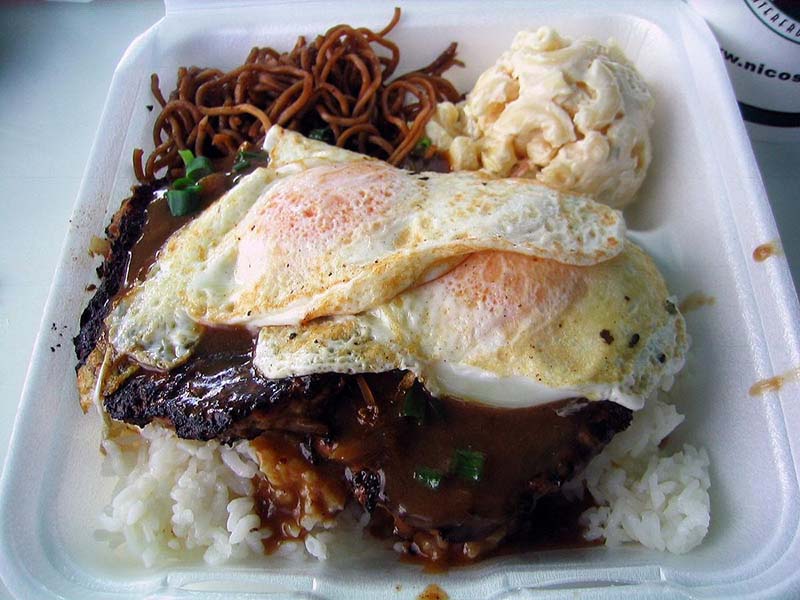
Loco Moco is a popular traditional dish of Hawaiian origin. This traditional meal comes with rice topped off by a hamburger patty, fried egg mixed into it as well brown gravy to make everything taste even better! It can be served alongside macaroni salad or vegetables if you want something healthier but still delicious for your appetite.
Although the dish’s name directly means “Local,” it does not refer to its place of origin, but rather that it is “loco” because of the rice and meat combined.
The origins of loco moco are often debated, with other places in Hawaii claiming it as their specialty. Although this dish is popular at family-oriented restaurants in Hawaii, it can also be sold at fast-food chains throughout the United States.
Loco Moco is a popular traditional dish of Hawaiian origin made with rice, topped with a hamburger patty, a fried egg, and brown gravy. Although the dish’s name directly means “Local,” it does not refer to its place of origin, but rather that it is “loco” because of the rice and meat combined.
Spam Musubi
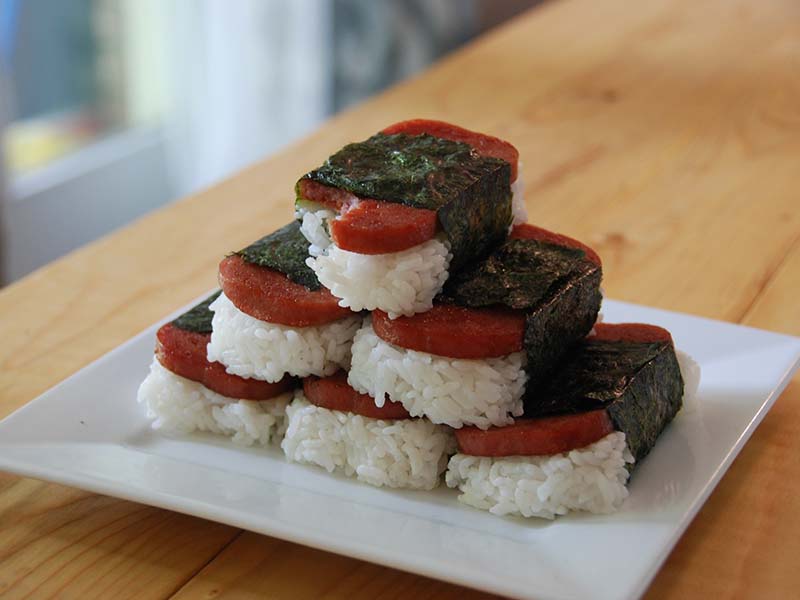
Spam Musubi is a popular snack in Hawaii. The Japanese word “Musubi” means rice ball, and Spam Musubi is an onigiri (rice ball). It is made with Spam and topped with furikake (a condiment usually consisting of sesame seeds, chopped seaweed, and other ingredients such as sugar and salt).
Spam Musubi is made with cooked white or brown rice, then shaped into a rectangular box, with Spam placed in the center. It sometimes is wrapped in nori (dried laver).
Spam Musubi is easy to prepare and only takes about 10 minutes to make if you have already made Spam ahead of time. You can eat it for breakfast, lunch or dinner.
It is considered a snack in Hawaii, but people often eat Spam Musubi with Furikake. It is a condiment typically consisting of sesame seeds, chopped seaweed, and other ingredients such as sugar and salt on top of hot rice with soy sauce poured over the spam musubi.
Hawaiian Food Recipes
The delicious flavors of Hawaii are now available in your home with these three simple recipes:
Kalua Pig
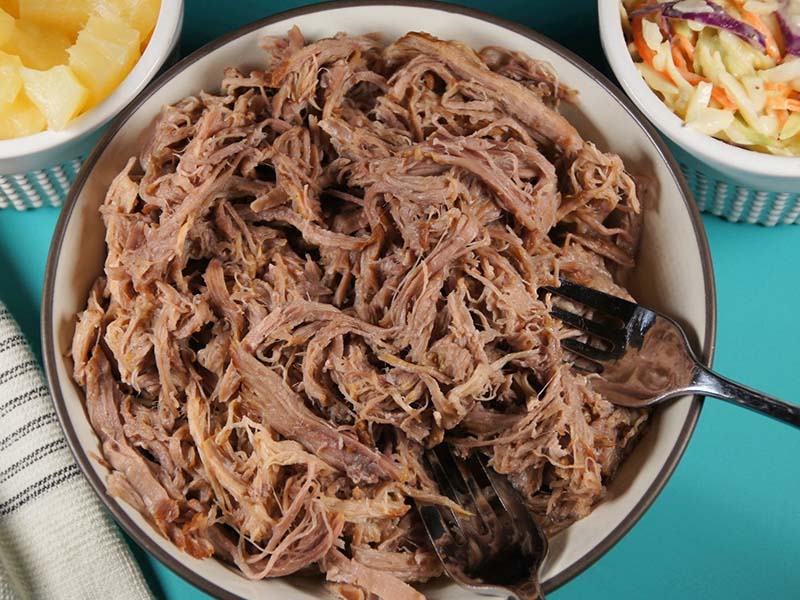
When cooking your Kalua Pig in an Oven, you can follow these steps:
First, dig a hole about two feet deep and twenty inches wide. The whole pig should fit perfectly inside the hole, and there should be at least 4 inches between the ground and the pig.
Next, line the hole with rocks, bricks, or wood to make sure it is sturdy enough to support the pig’s weight.
Then, place your banana leaves in a circular shape in front of where you dug your hole. This will be used to wrap up the meat after it’s cooked.
Place your pig in the hole on top of the leaves. The skin should be facing down. Fill up the hole with dirt and pack it tight so there are no air pockets left.
After you have packed all the dirt back into place, smooth out the surface of your pit so it is flat again. This way, dirt won’t have to be moved while you are digging the pit back out.
When you’re done, place some rocks or wood around the edges so animals can’t dig their way into your oven. Then cover it with leaves, so it looks natural again.
The best time of day to cook your Kalua Pig is right before sunset, so the heat won’t die down too much. However, you can cook your pig provided that you have prepared it correctly.
You will need to have a fire burning at all times while cooking your Kalua Pig. If there are no logs or coals available, simply use charcoal briquettes instead of sticks.
If you want to add more flavor to your Kalua Pig, you can add some banana leaves between the rocks and coals when they are hot. The leaves will infuse with the meat and add a nice flavor. If your fire is dying out or is too hot, spray it with water so the heat won’t burn your pig.
When you think your Kalua Pig is done, simply use a shovel to dig out the hot rocks and coals surrounding it. It should come away very easily with all this heat concentrated around one small area for easy disposal of waste material after the cooking process has finished. Turn over, so skin side faces up, then slice into the meat using either a knife or machete if need be.
Remove the bones and cut them up as desired. Serve with rice and whatever else you desire to eat it with.
Poi
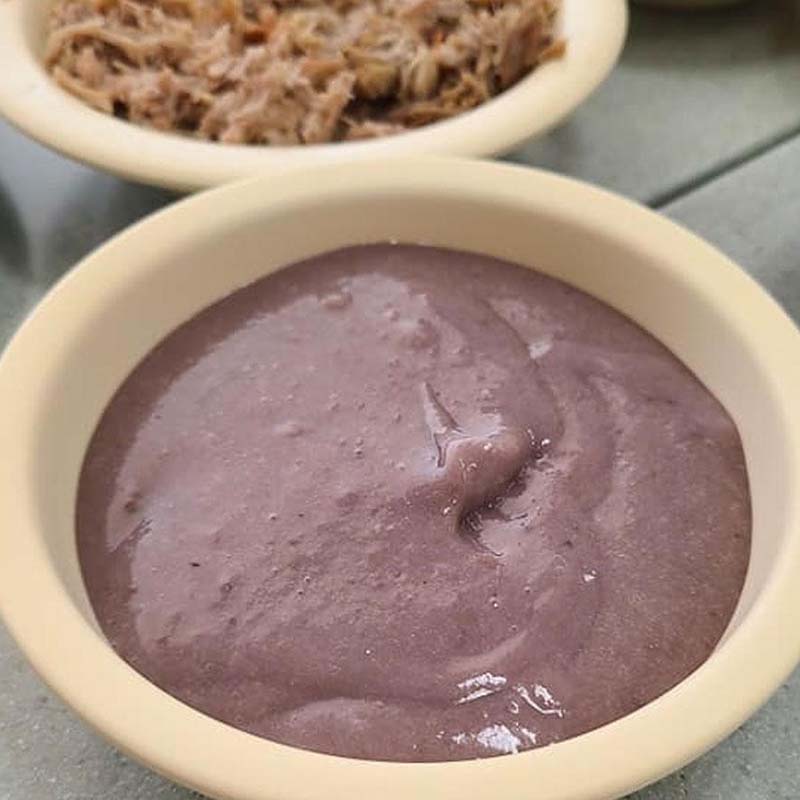
Be very careful when handling Kalo. The juice and the roots can cause itching and burning in some people’s skin. Use gloves or tongs to handle it.
Wash and scrub Kalo thoroughly with water; peel dark purple/reddish outer skin using a vegetable peeler. Slice into large pieces and place in pot, just enough to cover Kalo with water.
Add a dash of salt or fish (optional). Bring to boil, then lower the flame, simmer until soft (about 20-30 minutes), occasionally mashing with fork, spoon, or potato masher.
Drain liquid, mash again to break up any lumps. Add water to make desired consistency.
Beat Kalo with a wooden spoon or potato masher until it becomes pasty and spongy to make poi. At this point, you can choose to either continue beating it until it’s smooth and creamy or leave it in chunks.
The final step is to add water and beat Kalo for a few minutes until the poi has the desired consistency, smoothness, and sourness. Poi can be served immediately or allowed to ferment for up to two weeks in an airtight container.
When ready to serve, place in refrigerator for at least one hour. Poi can be served at room temperature or refreshed by adding a dash of water and stirring well.
Sweet Potato
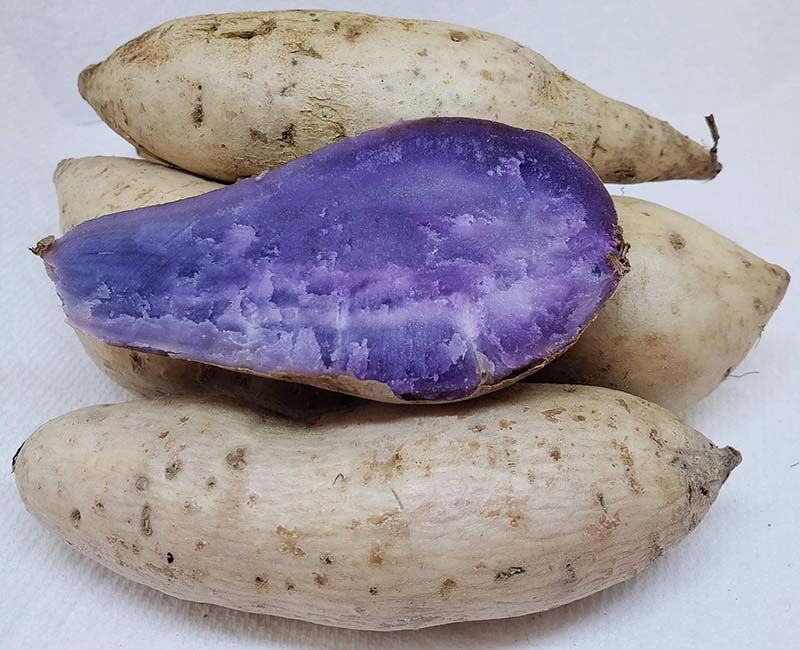
Baked Sweet Potato
Peel & cube sweet potatoes. Put in an oven-safe dish with a teaspoon of butter on each. Bake for 20-30 min until soft. Top with brown sugar to taste.
Sweet Potato Casserole
Steam or boil cubed yams until tender, about 15 minutes. Drain well and mash. Season with salt and pepper to taste, if desired. Fold in sugar and vanilla and top with pecans and marshmallows(optional)—Bake at 350 deg. For an additional 10 minutes until golden brown and crispy on top of the casserole.
Sweet Potato Pasta Sauce
Steam or boil yam until tender, about 20 minutes. Drain well and mash. Add in spinach or kale with liquid from the bag/s, if any. Cook for 10-15 minutes until the liquid has evaporated. Add in crushed/diced tomatoes with juice if using. Cook over medium heat until heated through.
Frequently Asked Questions
What is Keto Hawaiian food?
Keto Hawaiian food requires high amounts of healthy fats, moderate protein, and hardly any carbs. Food should be fresh and provide enough energy to keep people active throughout the day.
Can you buy Hawaiian Food in Bulk?
Yes, sometimes it is better to store your food instead of eating it immediately. Fresh fruits and vegetables cannot be stored long, so it is better to buy them in bulk.
Is your Hawaiian Food Gluten-Free?
Sometimes grocery stores offer gluten-free foods. However, nothing is 100% GF so always read the label before purchasing. Please note that not all products labeled GF are also free from soy or nuts.
Conclusion
Hawaiian food is very well known for all of the flavors it brings. From fish to watermelon, Hawaiian food has a little bit of everything. Hawaiian food is very different compared to many western foods because of the fusion of flavors and ingredients. Hawaiian food is famous for its variety of flavors and dishes not commonly seen in other countries, like pork cooked in coconut milk. We hope you can cook your Hawaiian food after reading our article in 2022.

